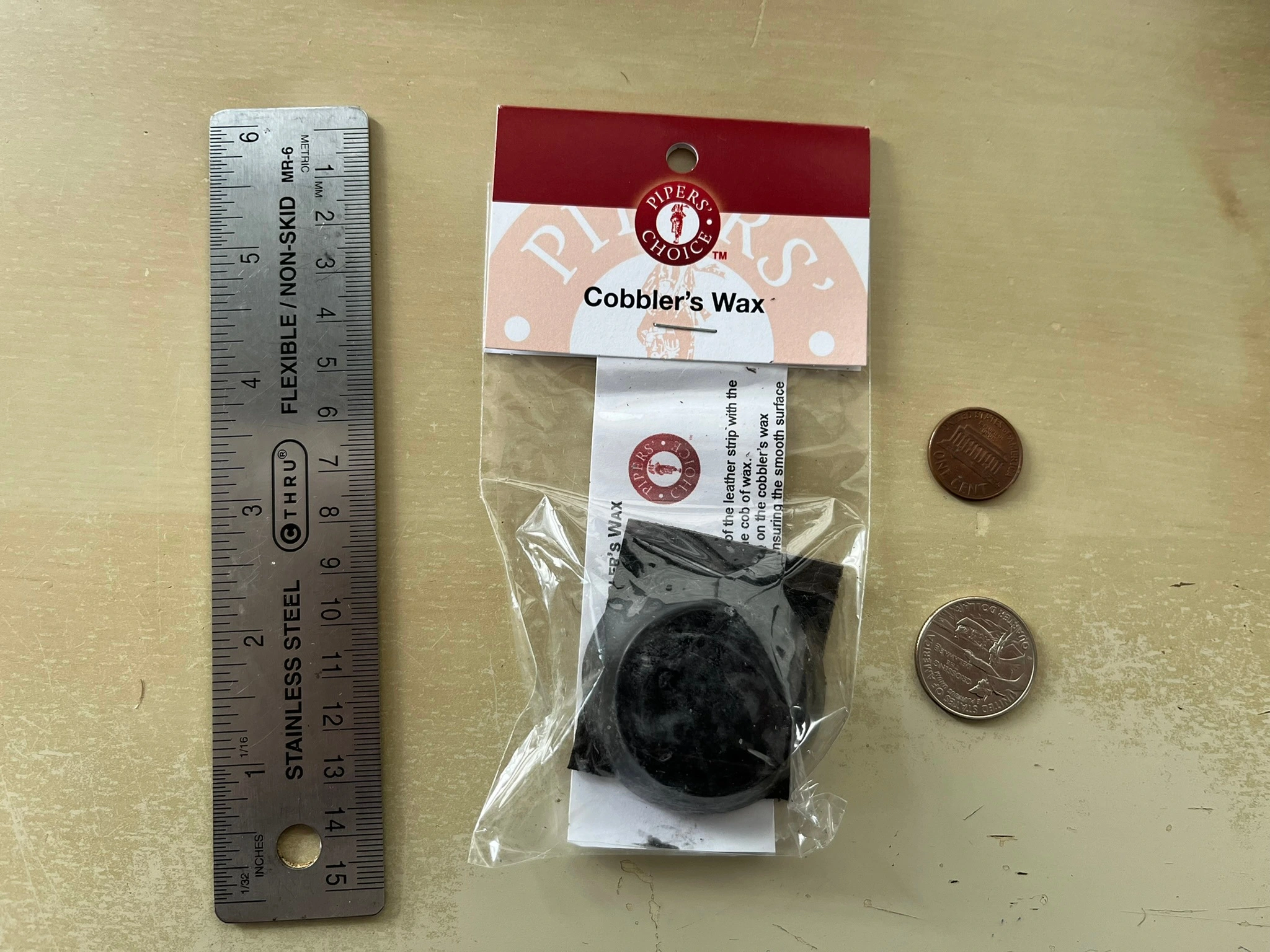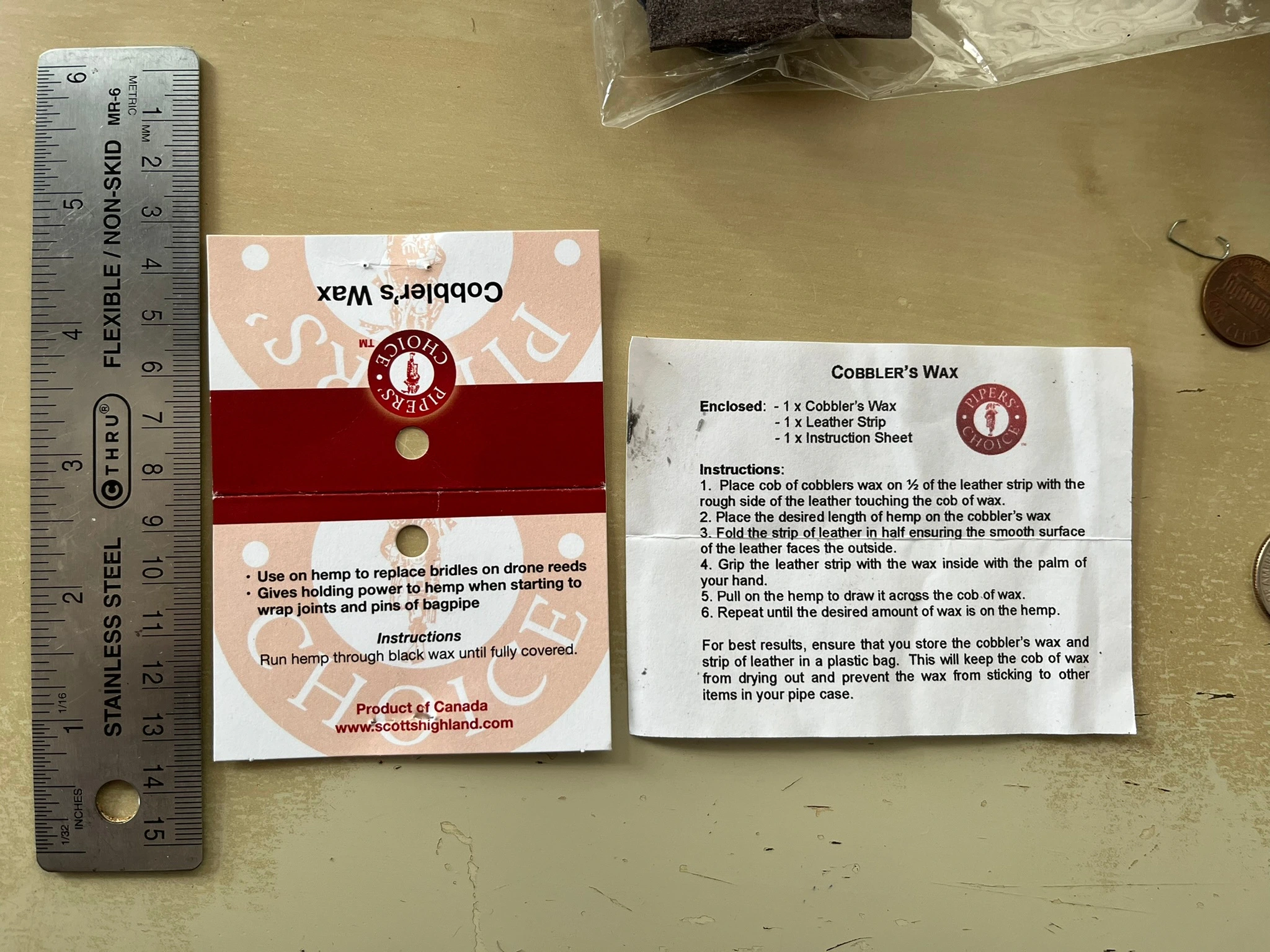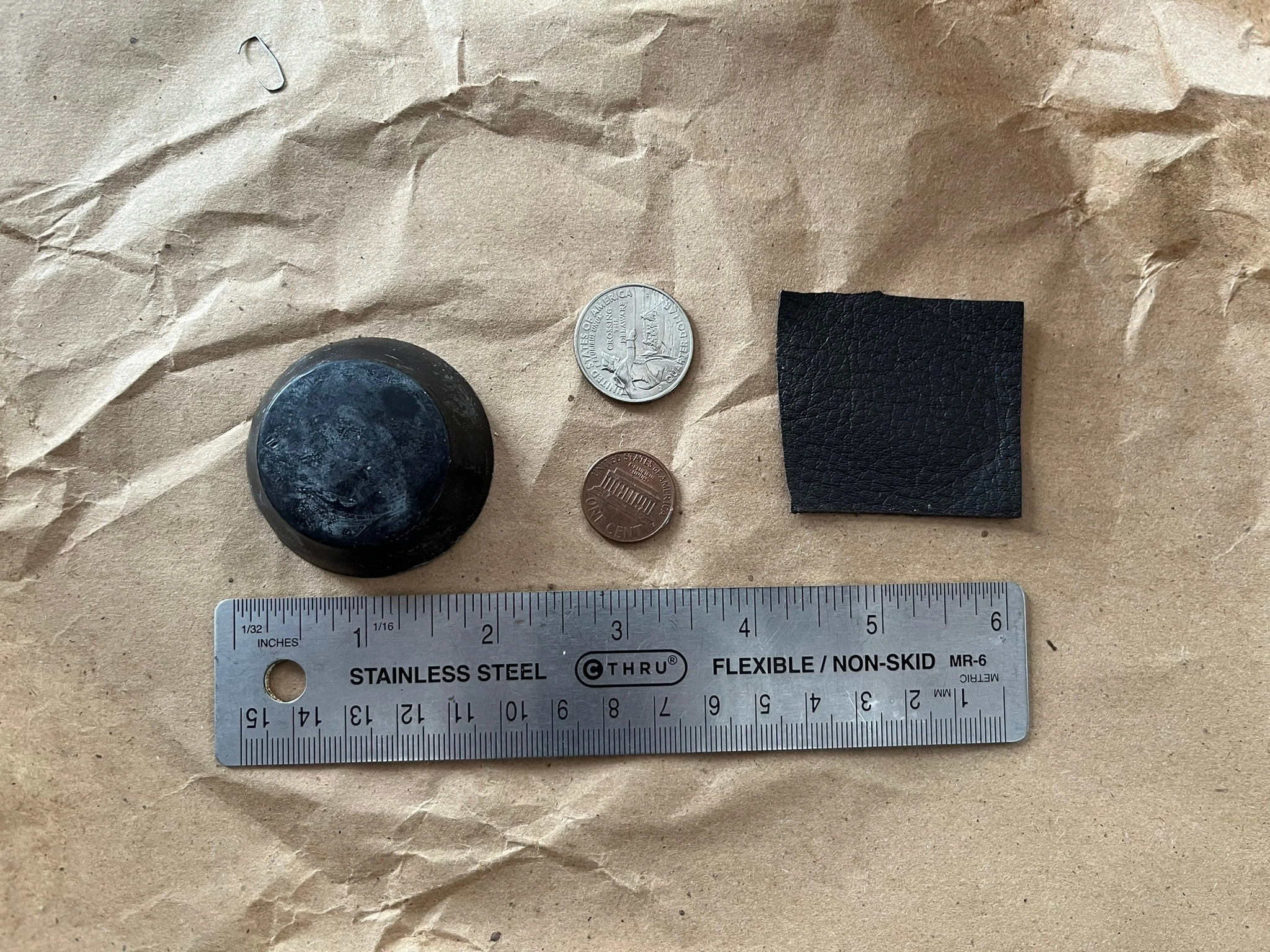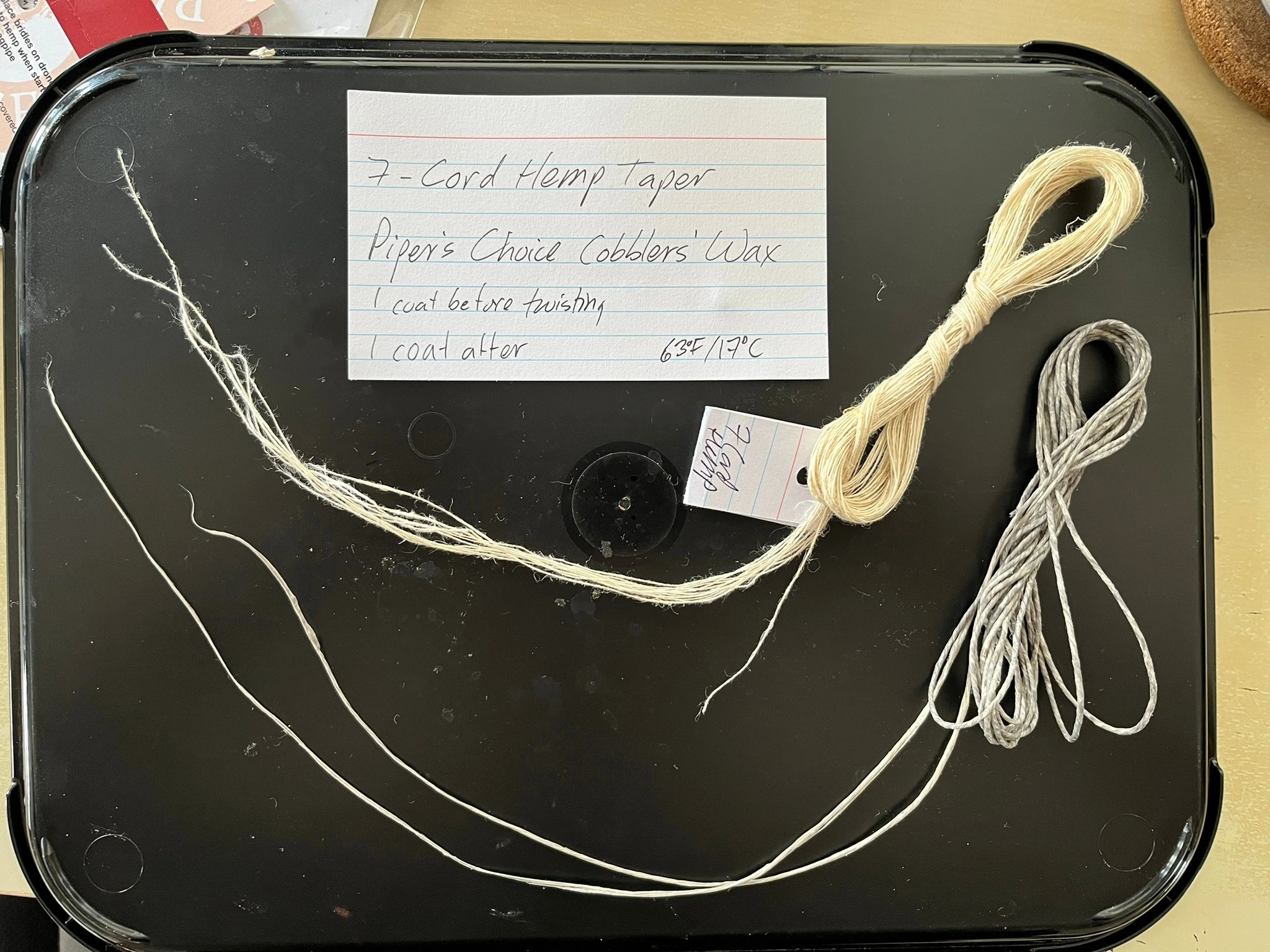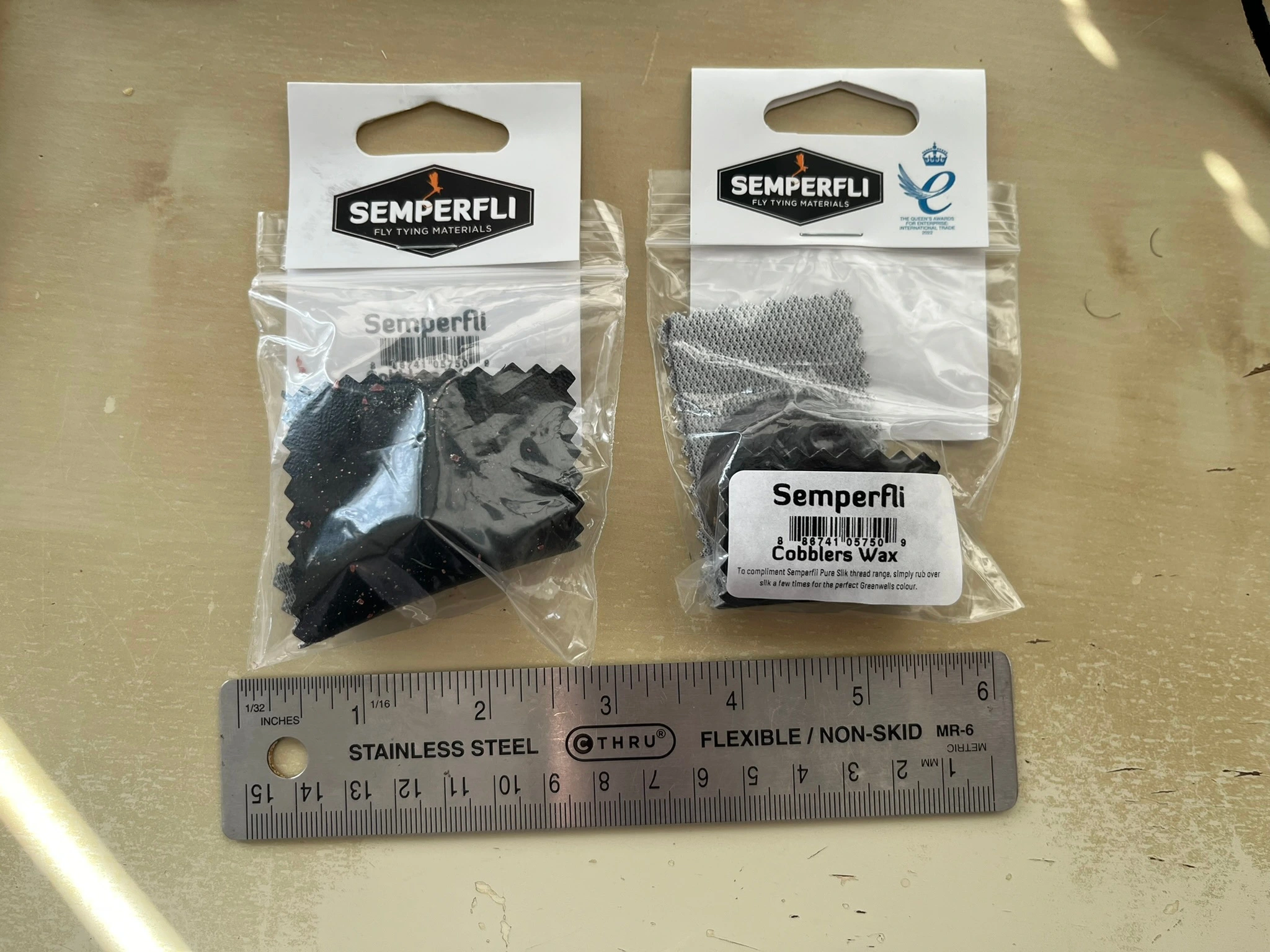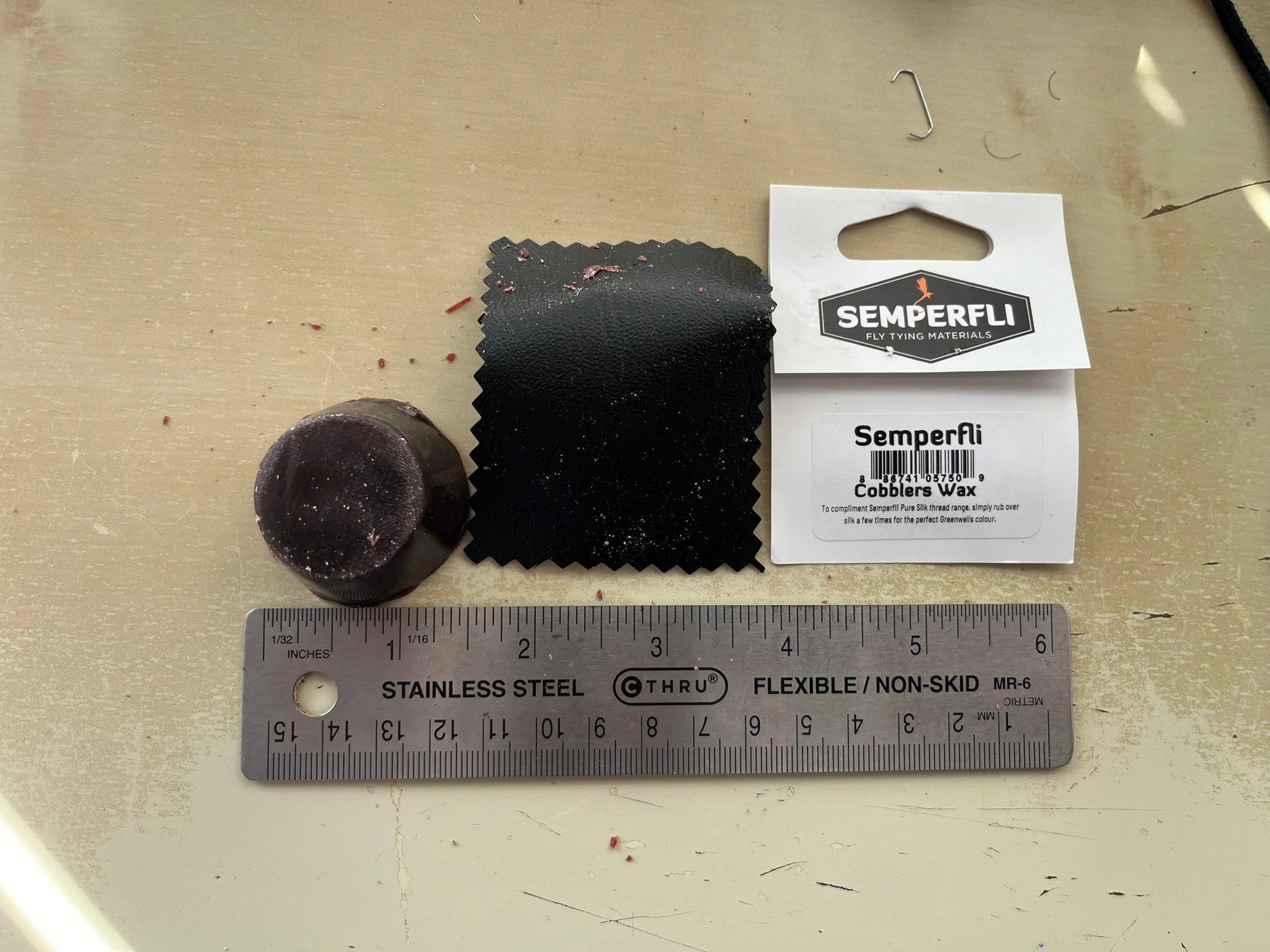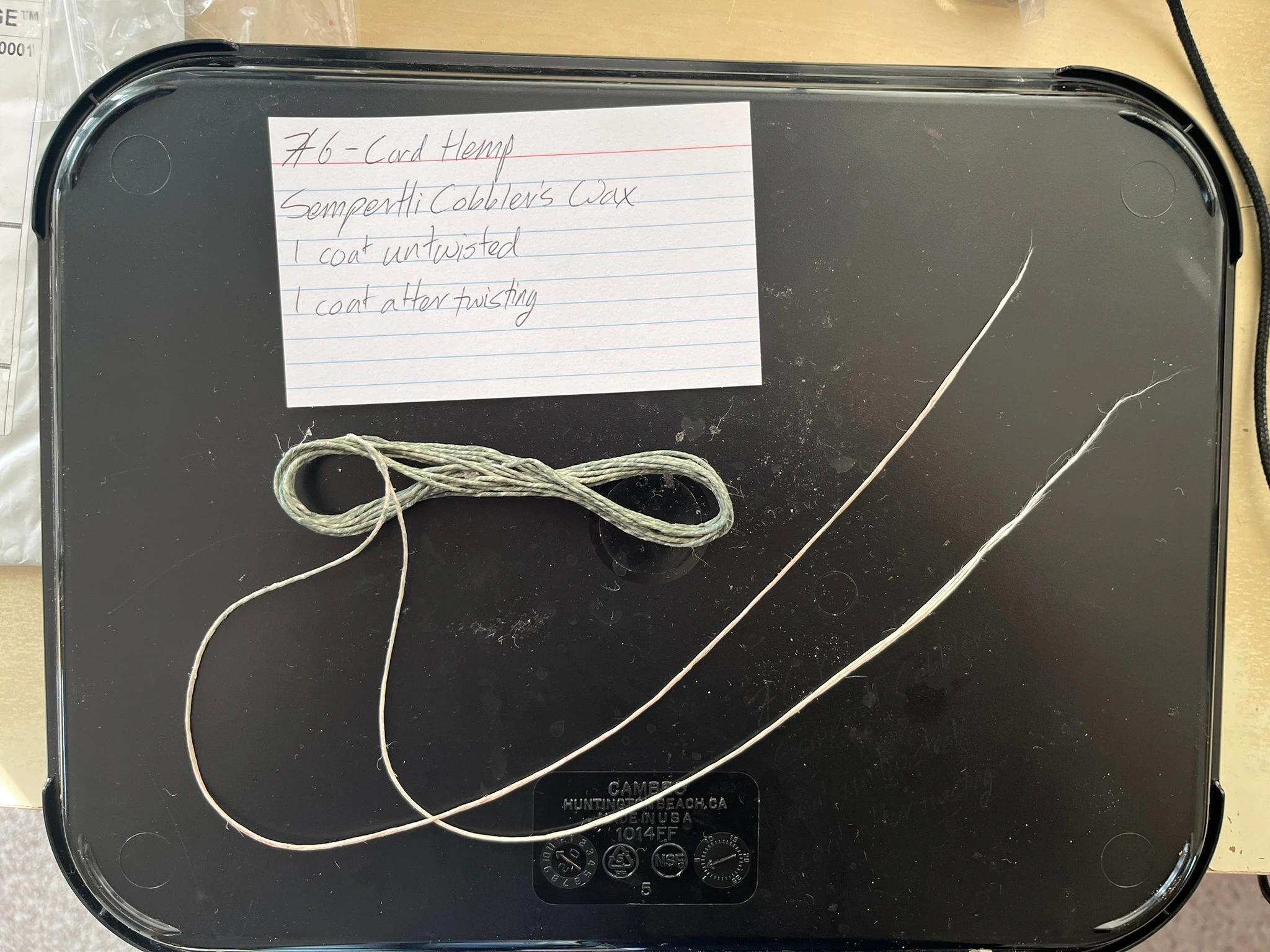Promising Sources
After much research, no little of it here in this huge forum thread, I was feeling at a loss for a source of usable pitch, whatever "pitch" needs to mean to stick and seal inseaming threads. Then, predictably, the capricious search-engine goblins decided it was better to keep stringing me along than let me down too hard, and I wound up finding a whole raft of online web stores offering rosin-beeswax-pitch blends, specifically marketed for hemp sewing, at reasonable prices, in stock to ship throughout the USA.
The magic search keywords? "cobbler's black wax". Behold:
https://duckduckgo.com/?q=cobbler%27s+black+wax
Bagpipe players, for hemp cords. Fly tiers, for silk. It's even being sold in kits with little patches of leather to apply and store!
I have a few pucks on order from this page:
https://www.hendersongroupltd.com/produ ... black-wax/ I'll be very curious to see how they work. I'll also be e-mailing that seller for any more information. A number of bagpipe suppliers seem to list the same item.
As for the fly-tying sites, I was able to trace back SKUs to at least one UK-based manufacturer:
https://www.semperfli.net/bwax000blk.html Heck, they'll even do it shaped like a skull:
https://www.semperfli.net/bwax001blk.html Memento mori for your fly-tying bench, perhaps? More importantly, both pages mention they manufacture in-house. But no mention of "pitch" or other ingredients by name. I have e-mailed them. I wouldn't expect to get a Betty Crocker recipe back, but I'd like to find out if there's tree pitch or bitumen involved.
Other fly-tying sites mention a possible US supplier, which I gather might be a one-man, small-business operation. The trading name is "Gunpowder Custom Tackle", for example:
https://eflytyer.com/product/gunpowder- ... white-wax/ That listing has not just "cobbler black", but also summer and winter variations—a promising a sign. A Facebook page puts them in Grand Junction, Colorado. I've sent an e-mail their way, too.
An Aside
Fly-tying and bagpipers. I never met D.W. in person, but I think he might have enjoyed that.
By the by, I was able to e-mail Randee, D.W.'s widow, and order a copy of one of his books this week. Feel free to reach out to me privately for her e-mail address, if you don't already have it. Pricing to me was $150 for
Western Bootmaking or
Western Packers on CD, somewhat more for the book on Wellingtons. Payment was by check or PayPal. I told her not to sweat it, but she mailed my CD really quick. It came with a PDF, no password or DRM or other shenanigans, as well as a "goodies" folder of WMV videos of thread making and some other steps. She also offered to hop on the phone if I wanted to talk about such tools as she has left.
On "Pitch"
I have learned a very important lesson about the true meaning of this term: there isn't one. No two dictionaries, encyclopedias, or historical sources, much less suppliers, can be relied upon to use or define the term consistently. It's not one of those kinds of words.
Assuming there ever
was any reliable meaning, my best guess for the "pitch" that aligns with the old sources describing "hand wax" or "coad" was essentially concentrated wood tar. In the United States, this was mostly from pine of the southeastern states, extracted by stacking fallen logs and stumps, surrounding with earth, and lighting a fire on top, essentially kiln heating to drip the resin off from the fiber. This "tar" would then be boiled or burned off, concentrating to "pitch".
This was all from a different production "pipeline" than that on live, standing pine trees, whose bark was gouged, causing resin to come to the surface and fall into mounted buckets. Distilling this excreted resin yielded turpentine, the liquid, and rosin, the solids.
Tapping trees en masse is no easy job, but distillation is a pretty well understood industrial process, not least in the southeastern US of A. On the other hand, I gather kiln drying resinous timber remains a pretty dirty, noxious job. I suspect anyone who's opened a pine tar can would agree. So that process, the tar-and-pitch part of the "naval stores" industry, really isn't going anymore, domestically. With bitumen from oil, we don't really need it. And the word "pitch" starts to wander toward meaning what we
do have.
If "viscoelastic polymers" are the game, I can't stop wondering why we don't just tap beads of silicone onto threads and pull them home. Especially pulling nylon or polyester to begin with.


